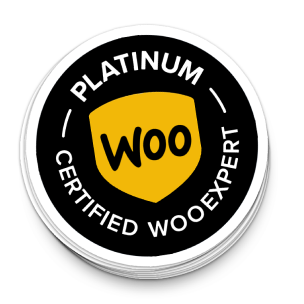Step up the game – Boost Your Copywriting technique For Brands
So, yeah, you’ve been a copywriter for some time now and your client list is getting bigger. Finally, some of your new clients are major businesses or brands. Now’s your chance to unfold your creativity, make your work stand out and reach a larger audience. Congratulations! But what happens now? How to actually write copy for big shots?
So far you’ve only worked with small businesses and clients. Their need was to put themselves on the map and get more eyeballs. You’ve had a fair number of challenging, successful projects, which got you the experience and reputation. Suddenly you’ve climbed one more step and consequently, you have to adopt new knowledge and skills. When it comes to brands, basic copywriting skills just won’t cut it. With smaller clients, it’s easier to do your copywriting magic because they usually have fewer products to sell than bigger, widely popular clients.
First, let’s put the focus on the product. The product can be anything that has a meaningful purpose or significance to someone. A wide selection of products and goods leads to saturation of the market and almost inevitably, high competition between sellers. Things that can differentiate them from the competition are symbols, marks, logos, names, words, sentences, or a combination of these. These are all brand features that make the difference between products even though the product can have identical specifications to the others on the market.

For instance, Coca-Cola is one of the 10 most powerful brands in the world for several decades now. Moreover, there are very few people who have never met with this brand or their story. Coca-Cola has a top-secret recipe guarded in the vault in Atlanta and few people know the ingredients. Is that the truth? Probably no. With modern technology, laboratory testing and analysis of ingredients, you can analyze every ingredient and their ratio, so the recipe is not top-secret. The story behind the brand is the key component and reason that Coca-Cola managed to stay ahead of the competition. Their brand story allowed them to be drastically different from the competition, although the actual difference between them is almost non-existent.
Some will say that all products in the same category are very similar, almost identical. They may have the same quality, characteristics, or purpose, but they drastically differ from competitor products by price and/or value. Once in a lifetime, every one of us happens to buy some poorly known product and was delighted with its performance or characteristics. Why were they delighted or positively surprised by an ordinary or poorly known product? Usually, most of people build strong loyalty to a certain brand based on brand promise and quality. They know that the brand which they consume regularly, guarantees their satisfaction, product expectations, and needs.
According to Investopedia, the brand is a distinguishing symbol, mark, logo, name, word, sentence or a combination of these items that companies use to distinguish their product from others in the market. Distinction and uniqueness from the competition are important, but things that make the brand truly different from the competition are brand promise and value. One more important thing is the additional value of the product because of brand identity. So what are the features and elements which need to be incorporated in the copy to satisfy the brand’s needs?
ANALYSIS

As usual, the analysis process is the foundation of all future activities. When it comes to brands there are a few important elements which belong in the public relations, branding and marketing domain. Copywriting for the brand could be a complicated task and proper analysis is required in order to get the bigger picture. Analysis can be performed in several ways.
- SWOT (STRENGTHS, WEAKNESSES, OPPORTUNITIES, THREATS) – Even though this is the most popular technique in the PR and marketing analysis, it could be easily used in copywriting as a tool for shaping the desired message. It gives the ability to segment the most important characteristics and qualities of the brand. It gives you a clear insight of things or qualities important for the brand image that you can use in copywriting process.
- TOWS (THREATS, OPPORTUNITIES, WEAKNESSES STRENGTHS) – It is a very similar principle to SWOT but it differs slightly. TOWS analysis is a method of strategic analysis, involving systematic and comprehensive assessment of external and internal factors that determine the current competitive position and growth potential of the company. TOWS features are placed in opposed relationships with each other (Threats with opportunities, Weaknesses with strengths) to maximize analysis effectiveness.
- PRESS CLIPPING is a media monitoring or method where you collect information about the brand. News Monitoring provides government agencies, corporations, public relations professionals, and other organizations access to news information created by the media This can be done online or in the printed media. The content that is isolated and analyzed may include documentation, content, analysis, or editorial opinion. Anyway, it’s the method for analyzing published media content associated with the brand or organization.
It is advisable to explore all the online sources of information such as forums, specialized websites, social media and other available feeds in order to get a better insight into the key strengths and weaknesses of the brand. Identified strengths could be used for determining the direction in which you want to go with message shaping. You can even use the benchmark analysis which is based on a comparison with other brands so your message and content can be distinctively different from the competition.
Every analysis method above gives you a better insight into the important features, characteristics, and elements that need to be incorporated into the message51All this can be used in the process of message shaping and communication. It helps when it comes to facilitating and decision-making on what to put in the forefront or focus, and what to avoid and not to use.
PLANING

When it comes to brands, they usually have already mapped out PR, marketing, and branding strategies. The strategy is the totality of all processes that we take in order to achieve a specific goal. That strategy includes several different tactics, which are developed and adjusted in accordance with the objectives of the strategy.
Tactics can be anything from campaigns, specialized media content or any other action that we use to conduct a strategy. Tactics inevitably include some form of communication that brands send to the targeted audience or customers.
This step is directly based on the results of the analysis. From the results of the analysis, we can extract the most important features and elements of the brand. That can be strengths or opportunities from the analysis, attributes that customers said that is positive or useful for them. Weaknesses and threats could also be useful features to shape the orientation of the message. When you identify things or elements which are deficient, you can formulate a message diametrically opposed to the current situation in order to influence the brand’s public image.
When it comes to placing the provided information in the proper context, all the obtained information found in the unofficial channels belongs to the brand image domain. The image is the impression of the brand or organization that people have created on their own. It is the totality of all opinions created by customers, the public, or the targeted audience to which the previous messages were sent. The public image of a brand or organization can be positive, negative, or both. It is the direct result of communication between the brand and its public. Logically, if the public image is negative or it’s leaning that way, message and communication should be adjusted.
But that is not all. If you find yourself in this situation, then you should take a closer look at the brand or organization’s identity. The brand identity is the whole concept behind the brand. It answers the question- ‘’What is the brand?’’ and it is composed of several different elements. Simplified, brand identity is the way an organization or the brand wants to be perceived. It is a feature or feature linked with a specific organization, product, service, or individual. Besides that, it’s a way of externally presenting the brand to the world.
The part of brand identity can be visual elements like logo, color, packaging design or product design. It also can have a textual form like a slogan, a special name, or a combination of characters, letters, and numbers. For instance – trademark color, logo, name, and symbol that identifies and differentiates the brand in consumers’ and targeted audiences’ minds. The characteristics of wide brand recognition can also be the brand vision, culture, positioning, promise, personality, relationships, and presentations in the public. All these elements have a strong impact on the brand’s public image or perception.
For the truly best result, the copywriter should include important demographic and psychographic features of the targeted audience as well as the elements listed above. Demographic characteristics include age, gender, income, race, ethnicity, or nationality of the targeted audience. Psychographic characteristics, on the other hand, include personality, values, opinions, attitudes, interests, and most important- lifestyle.
IMPLEMENTATION
The implementation is the phase in which all the elements, features, and characteristics from the first two steps are merged into the message. In this step, it is necessary to choose the orientation of the appeal or the message. Appeals can be focused on the product, customer, emotions, attitude, lifestyle, subconscious motives, or image. Whatever they are focused it’s important that they induce desired behavior or cause a strong impact on the audience.
In the phase of implementation or content production, after all, the characteristics or elements of copy have been identified and isolated, a copywriter should integrate copy content by the 7C model of communication:
CREDIBILITY
The credibility of the brand or communicator who sends the message is very important for successful communication. If the source (brand) is credible, receivers have full trust in it, the message will easily be accepted by the customers or public.
CONTEXT
Context is the environment/situation in which communicator sends the message. This can be an unplanned situation or a planned campaign, but it’s important that the context is the situation or circumstances in which communication takes place.
CONTENT
Content it is one of the most important elements/features of the core message in the communication process. Message content should have meaningful significance for the receiver and simultaneously create the desired stimulus, response, effect, or emotion. It should also be unique and be associated with the context.
CLARITY
Clarity of the message should be the priority. It should be easy to understand, and uniquely shaped, with elements associated with the brand. Sometimes it’s possible to create memorable and meaningful wordplay, but the clarity of the message is imperative to its proper understanding.
CONSISTENCY
Consistency and continuity – There should be continuity in the message. The receiver of the message must be familiar with the totality of all messages which also means consistency in content and messages. That doesn’t mean that a brand or organization should have the same or similar messages every time but must be carefully planned and designed to prevent a large gap between brand identity and image.
CHANNEL
Channel is the medium through which the message is sent to the receiver. It can be based on traditional printed media or digital media based on the targeted audience and their media consumption habits. Channel certainly has to be adjusted with the message because ‘’noise’’ may appear in the communication channel that causes incorrect message decoding.
AUDIENCE CAPACITY
Audience capacity is the ability of the targeted audience to receive and absorb messages. When designing a message, the sender needs to keep in mind the capacity of the receiver. Also, the sender of the message should take into account the demographics and psychographics of the targeted audience. That includes abilities, habits and audience profile.
The conventional belief is that copywriting is an easy task. You have the talent for creative writing and you’re good with sentences and catchy phrases. To the outside observer these few ‘’sentences’’ do not represent a demanding or challenging job. In reality, the copywriting process for the brands is largely based on extensive analysis, the knowledge of related fields (marketing & public relations) and the ability to separate the important things or elements on which the copywriting message is based. Oh, yes, one more thing, don’t forget about the profile of the targeted audience to whom the message is intended.







